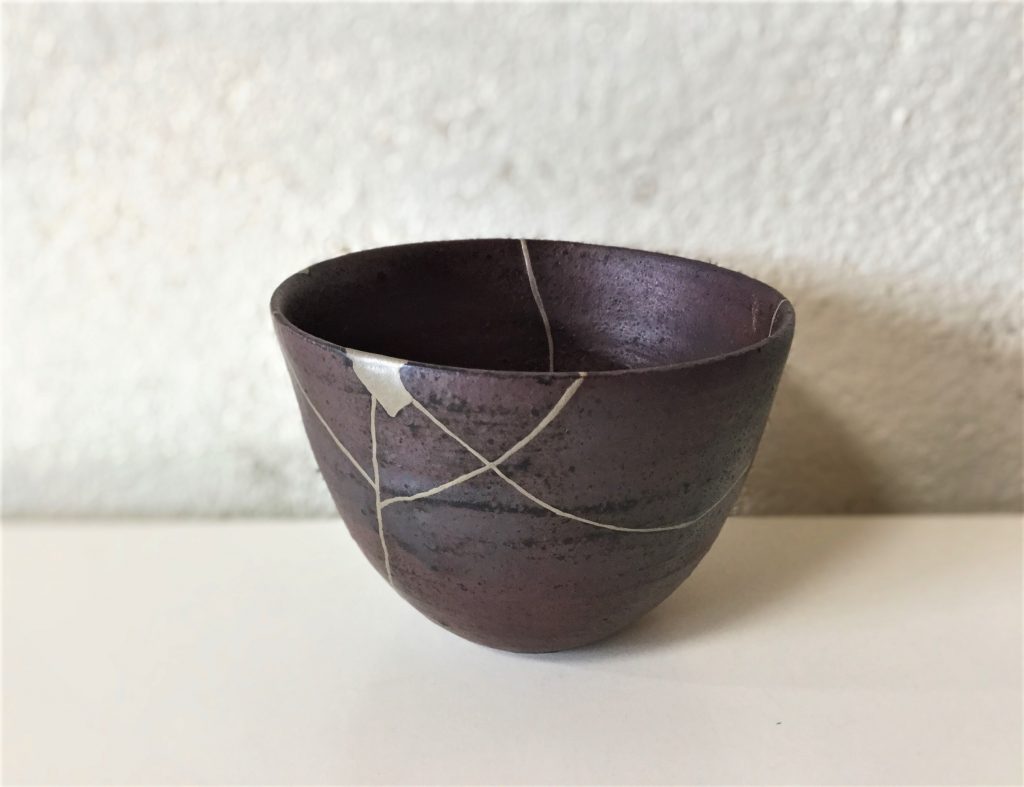Blog
About Kintsugi

“Kintsugi” is an ancient Japanese technique
for repairing ceramic and glassware.
One of its roots is “Urushi-tsugi”,
where broken pieces of earthenware
were glued together with lacquer (plant sap)
about 3,500 years ago.
The other is “Makie,” a technique of
using lacquer to fix metal powders
such as gold and silver to decorate
furniture in a painterly manner.
In Japan, this technology began from
the Nara period to the Heian period.
Later, in the Japanese tea ceremony,
rare ceramics were used to entertain
guests. If those unique pieces are
broken, there is no replacement
available.
“Urushitsugi” can be repaired, but it is
dark brown and so plain.
And so, the tea masters keep such
valuable items by mixing the techniques
of “Urushitsugi” and “Makie”.
It is thought that the addition of gold or silver
glitter made them more suitable forentertaining.
Another theory is that it was inspired by
the “Tsugigami”.
It is a collage of papers with
different colors and patterns that were
used by aristocrats in the Heian period to
write special letters.
In any case, the most unique aspect of
“Kintsugi” is that the damage is repaired
so that it stands out, rather than being
hidden.
Finding beauty in “change” is a Japanese
sensibility.
For example, the dirt on the vessel is
called “Keshiki” and loved.
And the expression of the old one is
called “Sabi”. “Sabi” is an expression of
something over time and is considered a
valuable and desirable condition.
In mostcases, the process of destruction is not a
human intervention, but an accidental
combination of fall or collision speed,
angle, and height, and hardness.
“Kintsugi” stops such accidental changes,
visualizes the invisible, and gives it
special value.




